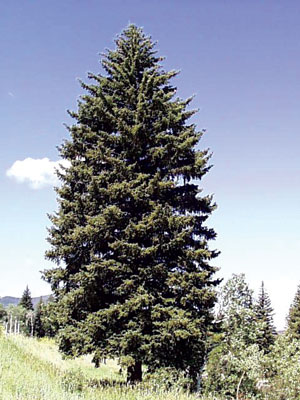
This year, an Engelmann spruce from Colorado was selected as the official U.S. Capitol Christmas Tree. The tree comes from the Grand Mesa, Uncompahgre and Gunnison (GMUG) National Forests in southwest Colorado.
Colorado’s forests are one of our best known natural resources, and this time of year, coniferous – or evergreen – trees continue to provide beauty and color even after deciduous trees like aspens have lost their leaves.
In Colorado’s forests can be found several species of conifer, including Blue Spruce, Bristlecone Pine, Douglas-fir, Engelmann Spruce, Limber Pine, Lodgepole Pine, Piñon Pine, Ponderosa Pine, Rocky Mountain Juniper, Subalpine Fir, and White Fir. Each has distinguishing characteristics, including variations in size and shape, color, and even smell. A useful tool for helping identify the different species is the Colorado State Forest Service’s Colorado’s Major Tree Species website. Additional information can be found in other CSFS publications such as their annual Report on the Health of Colorado’s Forests, and their Colorado Native Tree Guide.

Search our library’s online catalog for publications on various aspects affecting Colorado’s evergreen trees and forests, including insects and diseases; wood product utilization; and wildfire management. Finally, if you’re interested in growing evergreen trees on your property, the Colorado State University Extension’s Evergreen Trees fact sheet provides some useful tips.
- How to Spot the Differences Between Eagles and Hawks - August 16, 2021
- How Transportation Projects Help Tell the Story of Colorado’s Past - August 9, 2021
- Time Machine Tuesday: The Night the Castlewood Canyon Dam Gave Way - August 3, 2021